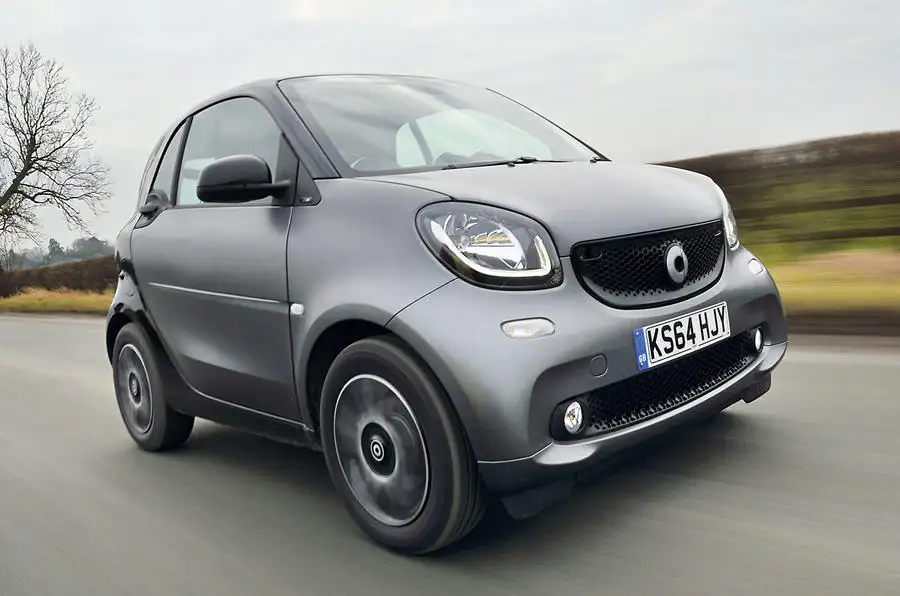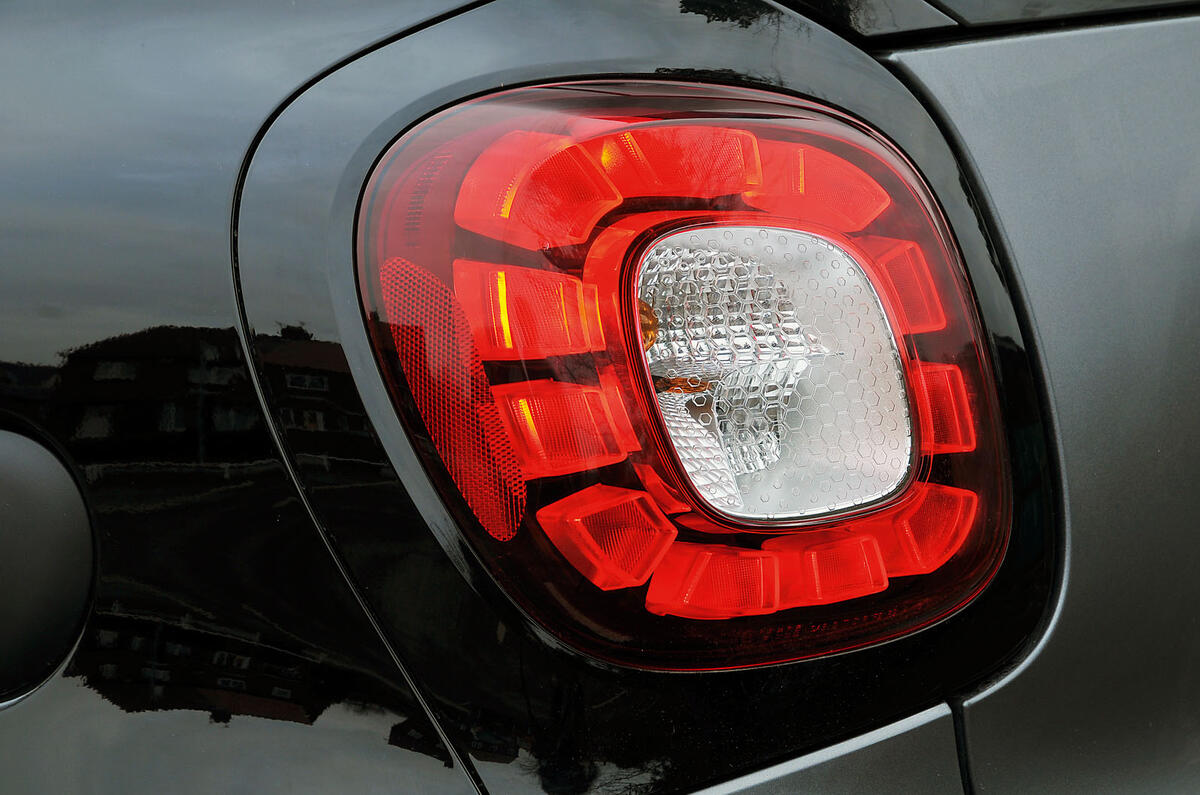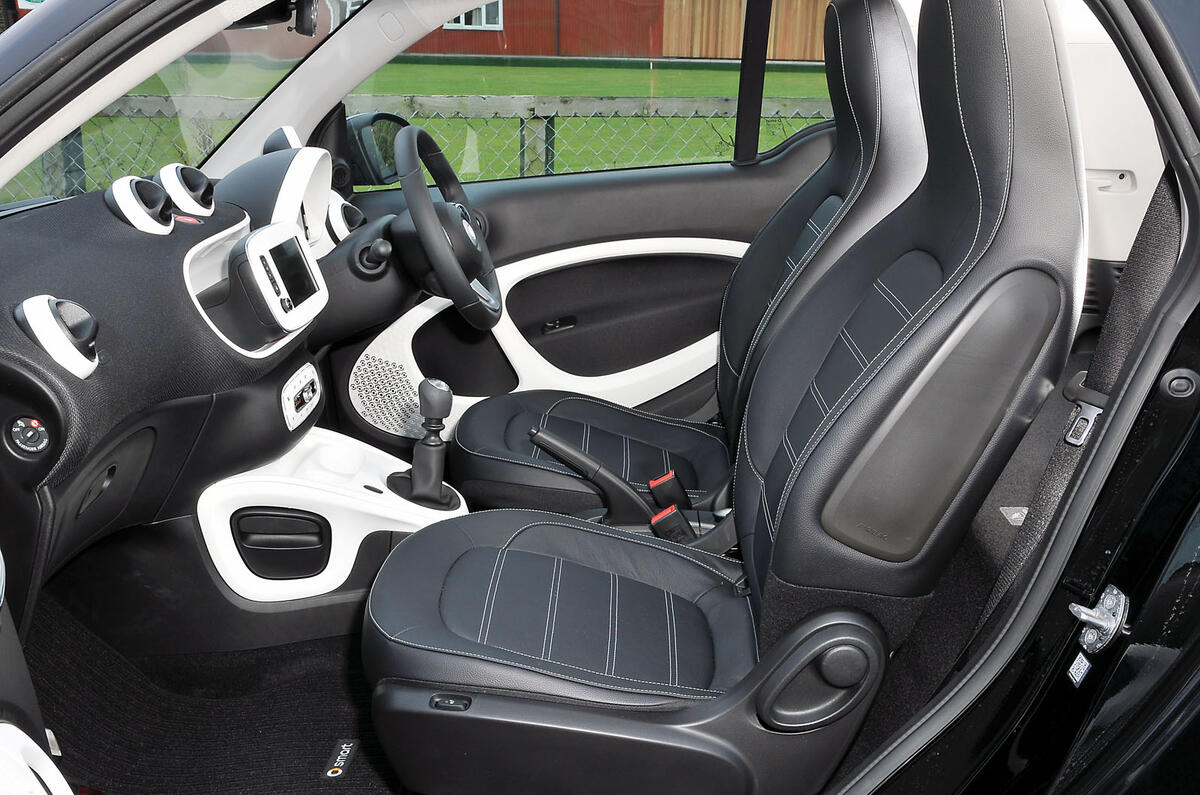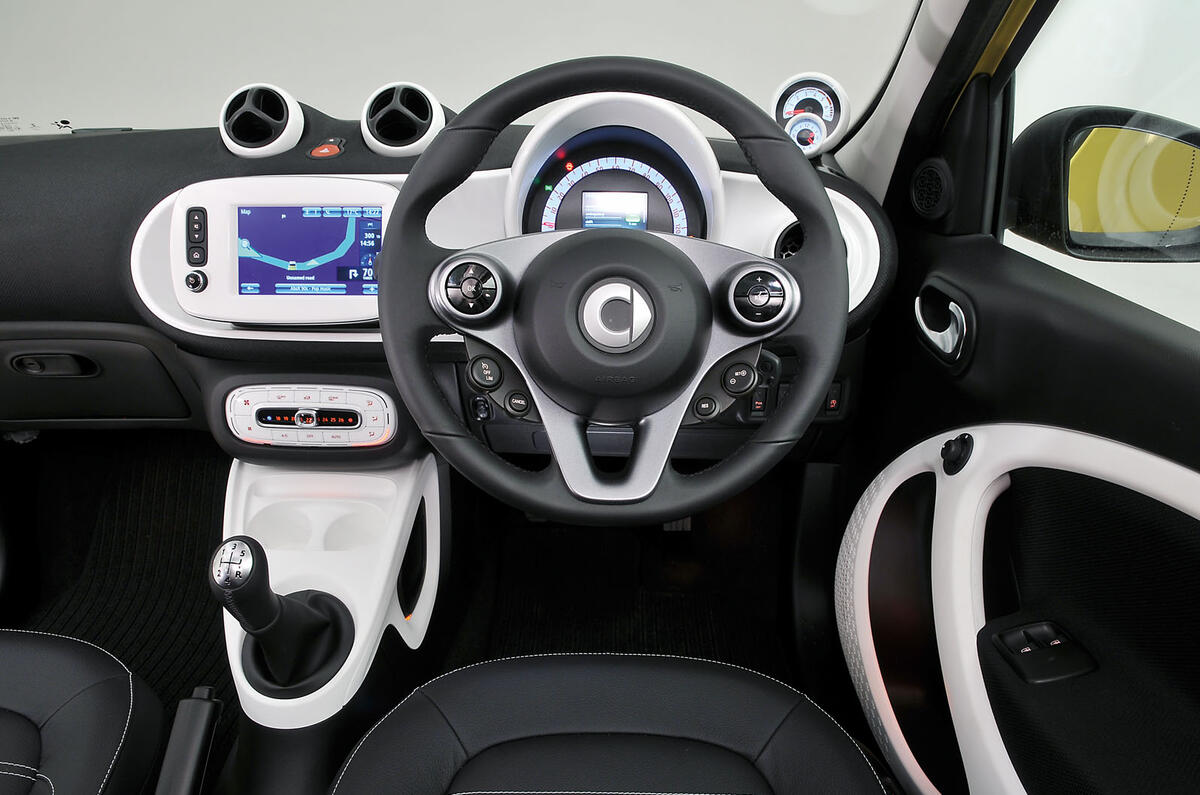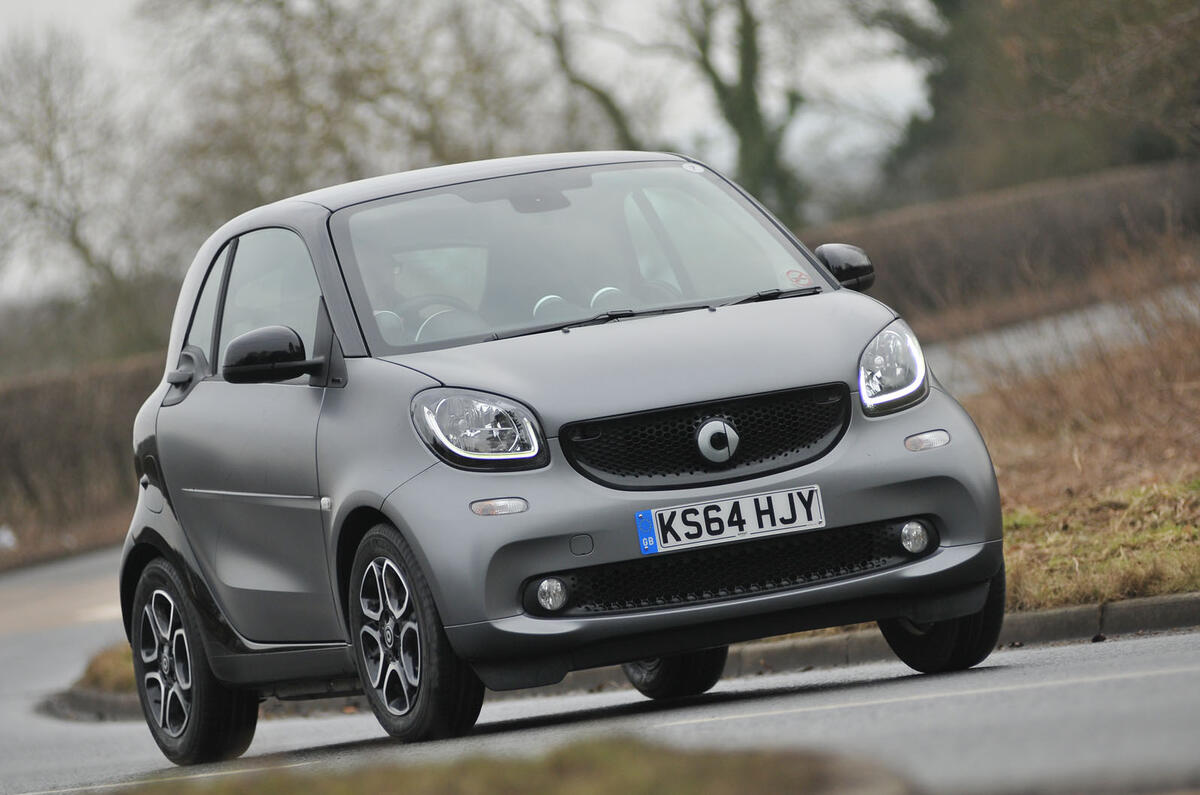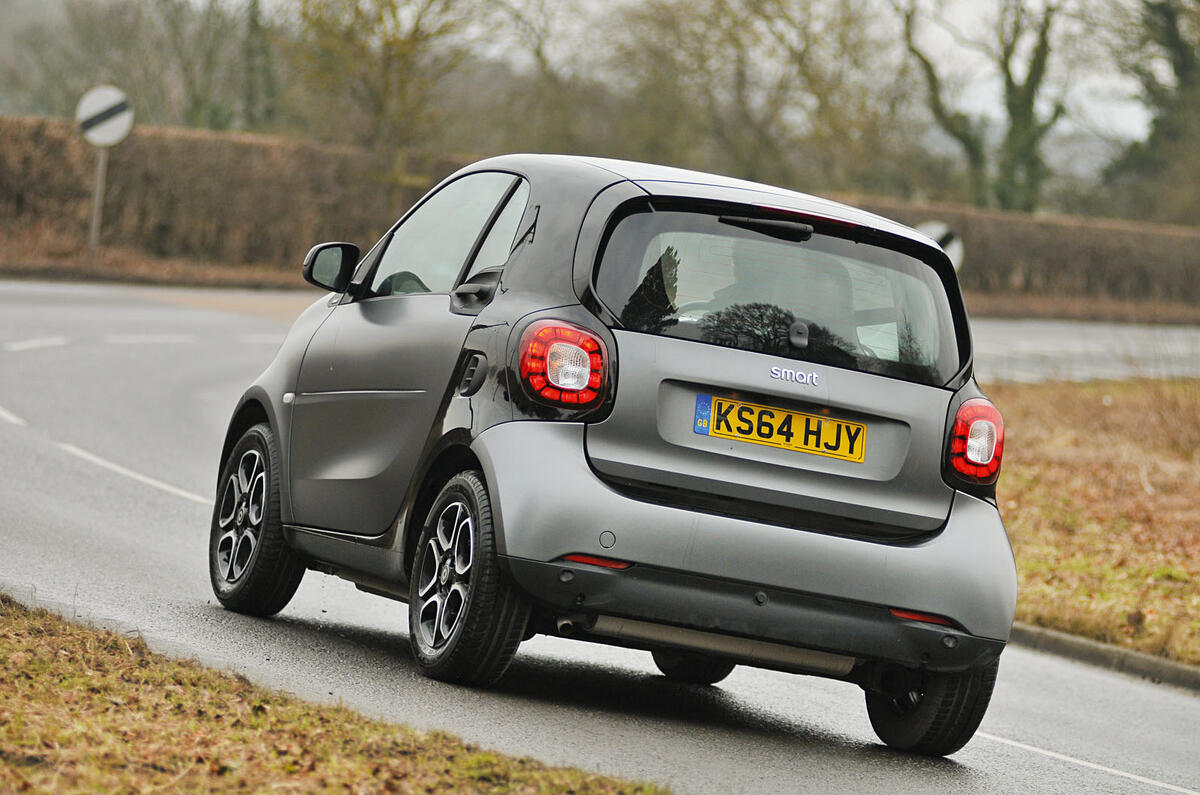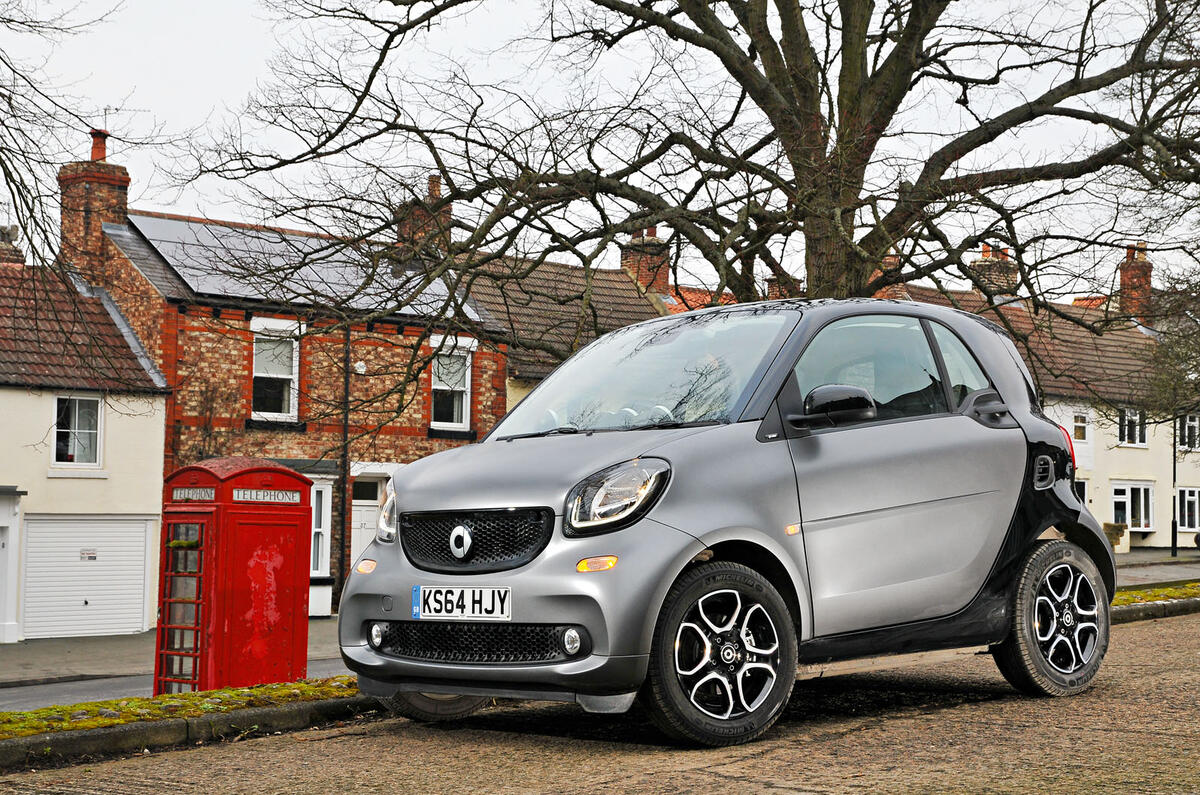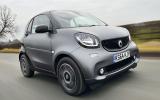Fundamental to its enhanced ability to sustain a cruise is the Smart Fortwo’s ride quality, which has been on a gentle upward curve since the critical mauling the original car endured upon its introduction.
The new suspension, aided by the extended travel of the springs, continues the trend, being obliging enough for you to no longer pay it any mind (a considerable advance on the pained grimace the model once induced) once you’re over the fact that a model with a 1.8m wheelbase is never going to settle with quite the same elan as its more conventional city car rivals.
Its advantage over them, rather plainly, remains more in the parking than the driving. The marginally larger dimensions have not dulled its obvious forte. In fact, the outlandish ability of the front wheels to now turn even closer to right angles has made executing impromptu U-turns and inching out of tight spaces even easier still.
Squeezing into them is not what you’d call demanding, either, what with each corner of the car being virtually within touching distance of an outstretched hand (making a nonsense of the rear-view camera fitted to our test car).
The car’s ability to nestle swiftly into very tight gaps ought not to be underestimated. Buyers, after all, expect the Fortwo to be supremely wieldy. However, where the best of the opposition combine their agility with a cocky sense of can-do fun out of town, the Smart’s incisiveness still feels robotic at speed.



